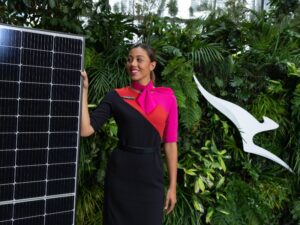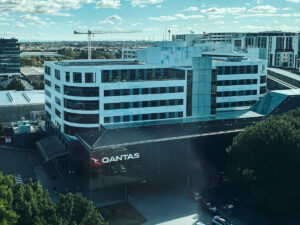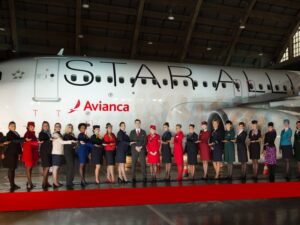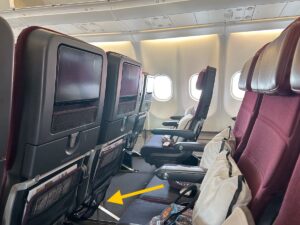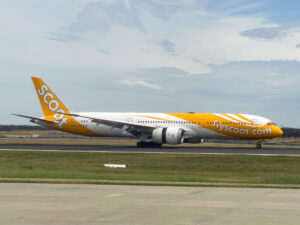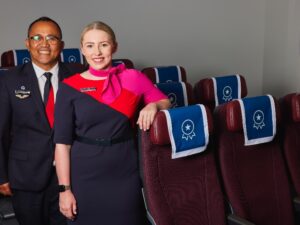
Last week, Qantas unveiled the biggest change to its frequent flyer program since 2019 with the introduction of Classic Plus Flight Rewards.
Unlike traditional Classic Flight Rewards, which cost a fixed number of points, Qantas prices Classic Plus rewards dynamically. In general, Classic Plus rewards will be more expensive than Classic Rewards. The trade-off is that Qantas will release far more seats as Classic Plus rewards, making it easier to find availability.
On one hand, Qantas had to do something to address one of its loyalty program’s biggest pain points. In recent years, members with lots of points have been complaining that they couldn’t use them because they couldn’t find reward seats.
At the same time, many Qantas Frequent Flyer members feel that this new redemption option represents poor value. There are limited opportunities to get “outsized value” from Classic Plus rewards, since you won’t be able to redeem a small number of points for a flight that otherwise costs a lot of money.
So, why did Qantas introduce Classic Plus Flight Rewards? What does this mean for members, and what are the wider implications for the Qantas Frequent Flyer program? Let’s take a deep dive…
Contents
A middle-ground between Classic Rewards and Points Plus Pay
Over the years, it has become increasingly difficult to find Classic Reward seats – particularly in premium cabins, on popular international routes and during peak times. That’s not to say that no seats have been available – there have been lots of Classic Rewards available in Economy and at off-peak times. But many Qantas Frequent Flyer members started to get the impression – rightly or wrongly – that there were never any reward seats available on flights they wanted.
The previous layout of the Qantas website didn’t help. Previously, if a Classic Flight Reward wasn’t available on a route someone was searching for, the Qantas website would offer up Points Plus Pay options instead.
When using Points Plus Pay, Qantas converts the cash airfare cost to points at a rate of around 0.6 cents per point. The result was that the Qantas website was advertising one-way Business Class flights to Los Angeles costing over a million points. (A Business Classic Reward seat would cost 108,400 Qantas points + ~$339.)

Qantas has acknowledged that some people found this confusing. Points Plus Pay is still available as an option for Qantas Frequent Flyer members who want to use points to reduce the cost of their airfare. But Qantas has moved this option to the payment page.
Classic Plus provides a middle-ground option. Its pricing and availability sits roughly in the middle between Classic Rewards – which are great value but have limited availability – and Points Plus Pay, which is poor value but available on all flights.

Qantas is not removing Classic Flight Rewards
Qantas says that it has no plans to remove Classic Flight Rewards, and that it will continue to offer the same number of seats going forward.
“We know how much our members love the existing reward seats and have been booking them in record numbers, so the new Classic Plus product we’re announcing today is over and above our commitment to 5 million Classic reward seats,” Qantas Loyalty’s new CEO Andrew Glance said.
Asked if Qantas had changed the mix of Classic Reward seats available, Glance reassured that he was “not aware of any material change”.
Qantas knows that Classic Flight Rewards are popular. These and Classic Upgrade Rewards are the best value ways to redeem Qantas points. The aspiration of being able to one day fly Business or First Class almost for free is one of the main reasons that so many Australians collect Qantas points in the first place. Take these away, and Qantas would kill its golden goose.

Without Classic Rewards, Qantas Frequent Flyer would risk being seen as just another cashback program. It just would not have the same appeal.
You only have to look across the ditch at Air New Zealand’s Airpoints program to see an example of this. Air New Zealand treats its Airpoints like money, with one Airpoints Dollar worth $1 towards a flight. That’s simple but not particularly appealing, which is probably why almost nobody outside of New Zealand uses the program – and many New Zealanders only use it begrudgingly because there’s no competition.

But that doesn’t tell the whole story
Qantas says the number of Classic Reward seats will stay the same, and therefore, they’re not taking anything away from members.
That is technically true. But it doesn’t account for the fact that more than a million new members have joined Qantas Frequent Flyer in the past year alone.
Qantas Frequent Flyer now boasts 15.8 million members, and they are earning more points than ever before. There are also now 500,000 Qantas Business Rewards members – Qantas says one in five Australian small-to-medium businesses have joined – adding even more Qantas points into the pool.
Admittedly, some of those 15.8 million people to have ever joined Qantas’ loyalty program are probably dead now. Others may have stopped engaging with the program long ago. But there’s a definite upwards trend.
It also doesn’t account for the fact that Qantas had been releasing “up to 50% more Classic Reward seats” over the past couple of years as a temporary measure to placate its frequent flyers. Those “additional” Classic Reward seat releases probably won’t continue going forward.
Classic Reward seats not keeping up with membership growth
So, Qantas has been issuing more points but the number of Classic Reward seats available hasn’t changed. If Qantas points were a currency, this would cause inflation.
Asked last Monday if Qantas has increased the number of Classic Reward seats commensurate to its increase in membership numbers, Glance responded that Qantas was introducing Classic Plus exactly to be able to do this – and to do it sustainably.
Qantas also pointed out that it has been growing the suite of non-flying redemptions available to members, including through Qantas Hotels and the recent launch of redemptions with Ticketek.

Qantas CEO Vanessa Hudson added that the high number of points earned by members demonstrated the program’s success. She wants to continue adding members and growing the program. But she added that in the life cycle of any loyalty program, you need to “reset” redemptions to stimulate the next phase of growth.
80% of available reward seats will soon be Classic Plus
Qantas has said that it will continue releasing around 5 million Classic Reward seats each year, while adding around 20 million Classic Plus seats annually. That means that 80% of the reward seats available to book through Qantas Frequent Flyer will be Classic Plus rewards.
Of the five million Classic Reward seats, most of those are for travel on Qantas’ 45 partner airlines. The number of Classic Reward seats available on Qantas aircraft is actually much less than five million.
Qantas currently has no intention for Classic Plus to completely replace Classic Rewards. But with so many more seats now being made available as Classic Plus rewards, it’s inevitable that when searching on Qantas.com for reward seats, many searches will only turn up Classic Plus seats.
The North American programs already introduced dynamic reward seat pricing some time ago. This began with airlines adding “anytime” awards which cost more miles but were available on more flights. But over time, as noted by some AFF members, the number of Saver (their version of “Classic”) reward seats offered by US airlines appears to have gradually decreased.
Now, when you search for premium cabin reward seats with US airlines on popular international routes, those higher-priced awards are often all you’ll find. Several US airlines have even removed award charts completely.
The fine balance of how many reward seats to release
In a recent survey, Qantas asked its frequent flyers whether they “expect to be able to use my Qantas Points on any flight of my choosing”. When worded like this, it’s quite likely that most people would “strongly agree”.
But I don’t think most people necessarily expect to be able to find Classic Reward seats on any flight. That would be way too generous.
But after years of loyalty to Qantas and saving up their points, I think frequent flyers do expect to find at least something if they’re willing to be flexible. The problem has been that there have been so few seats available on some routes that even the Frequent Flyer Concierge team, with their expert knowledge and sophisticated searching tools, could not always find seats.
Realistically, Qantas cannot and should not release Classic Reward seats on every single flight. That doesn’t make commercial sense.
The frequent flyer program business model
One of the reasons that Classic Rewards can be so valuable is that the airline controls availability. They generally only offer seats as Classic Rewards or upgrades that they don’t expect to sell at full price. That way, the marginal cost to the airline of providing the reward is low.

At the same time, the value to the member redeeming their points is high. And let’s face it – Business Class flights are a highly aspirational reward. Almost everyone wants to fly up-front without paying for it. This is what motivates members to continue earning points, which the loyalty program makes money from. It’s a win-win for airlines and frequent flyers!
But there’s a huge opportunity cost for Qantas if it gives away a Classic Reward seat that they would have been able to sell to a full fare-paying customer. That’s why Qantas doesn’t want to release too many Classic Reward seats, particularly if they can fill their cabins without doing so.
Qantas says it recently invested $50 million in releasing extra Classic Reward seats. That included an extra 6,000 Classic Reward seats to Europe last October for travel during the peak European summer period. That seat release had a real opportunity cost because Qantas could have sold most of those seats as commercial airfares and made a lot more money.
Better availability inevitably means worse value
The commercial reality is that, the more reward availability Qantas releases, the less generous it can afford to be with pricing.
Qantas has chosen to make Classic Plus rewards widely available. That way, members have a realistic opportunity to fly their families overseas on points during school holidays – including in premium cabins, if they want to. The trade-off is that the price just isn’t that attractive in many cases – particularly on said long-haul, premium cabin redemptions.
Sure, Classic Plus is much more attractive than Points Plus Pay. But rather than the Classic Plus model, Qantas could have created a second tier of Classic Rewards which perhaps only cost around 50% more points and was a bit more widely available. This is the model used by Singapore Airlines’ KrisFlyer program, among others.

Qantas says it’s been listening to its customers. It seems customers were complaining more loudly about the availability of reward seats, rather than how they’re priced.
Qantas’ October 2023 experiment
In October 2023, Qantas offered 50% off Points Plus Pay redemptions in premium cabins (meaning you could get 1.2 cents per point worth of value on any commercial airfare – slightly less than the 1.5 cents you get with Classic Plus).
In hindsight, Qantas might have been using this promotion as an experiment to see if members would bite. The airline was probably encouraged by the results, with 15,000 bookings during this promotion.
How has the take-up of Classic Plus been so far?
Qantas says more than a billion points were redeemed on international flights in the first day after launching Classic Plus. That’s triple the number of points compared to a normal Monday.
We do know that at least some of those were Classic Plus bookings, but Qantas declined to tell us how many.
The huge amount of publicity that Qantas received on Monday, and the fact they released a large batch of Classic Reward seats to North America and Japan on the same day, could just as easily account for the uptick in bookings.
So far, a little over half of the Classic Plus bookings made have been for Economy Class.

Asked last week if people would book Classic Plus rewards, Hudson said she was “really confident people will find this valuable.”
The airline further said that “while usually requiring more points than the existing Classic Reward seats, Classic Plus will represent some of the best value across the frequent flyer program with much wider availability.”
Do frequent flyers think Classic Plus is good value?
But many AFF members aren’t convinced by the value proposition and say they probably wouldn’t book these. I tend to agree because I prefer to save my points for redemptions where I can get much more value than just 1-1.5 cents per point. On average, last year I got 3.87 cents out of every point I redeemed.
My points don’t grow on trees and I don’t have a massive credit card spend. But if I did earn millions of points each year through card spend, I would prefer to collect points with a flexible credit card rewards program that provides the flexibility to transfer the points to lots of different airline programs.
That’s not to say there aren’t circumstances when Classic Plus might be good value. They do offer more flexibility than sale airfares. And some AFF members have found reasonable use cases.
Some Qantas Frequent Flyer members with large points balances may well use up lots of their points to get seats on the flights they want as Classic Plus rewards. But after doing so, will they continue engaging with the Qantas Frequent Flyer program in the long term? Or will they switch to earning points with other programs that might offer better value?

Qantas believes this change will increase the value of its points
Qantas has told its shareholders that “Classic Plus Flight Rewards is anticipated to increase the fair value of a Qantas Point”. It will do this, according to the airline, by reducing breakage and increasing the value of revenue received in advance.
The airline will have to cover one-off costs this year as a result of this change, including “the value of displaced seat revenue in the airlines” and the “non-cash impact to fair value assumptions applied to the future sale of points.” But Qantas Loyalty believes this will help it to drive long-term growth.
Hudson said she was confident this change would help it to attract new partners. The airline also appears to believe that this will allow it to increase the price at which it sells points to third parties.
Under the previous trajectory, with more points being issued but the number of reward seats remaining stagnant, it would be hard to see how the value of points could increase. But if Classic Plus is a success, Qantas’ projections could hold water.
Ultimately, Qantas’ belief that Classic Plus will help them make more money shows that this change is in their own interest. But Qantas Frequent Flyer’s long-term success doesn’t need to come at the expense of members – in fact, it’s the opposite.
Qantas Frequent Flyer does best when its members are engaged. Members engage if they perceive value in the program. So, hopefully this is a win-win for both the program and its members.
“The growth and success of Qantas Loyalty is driven by engaged members who earn and redeem points across the frequent flyer program, including with our partners, and that’s why we’re investing in making more seats available to book with points,” Hudson said.

